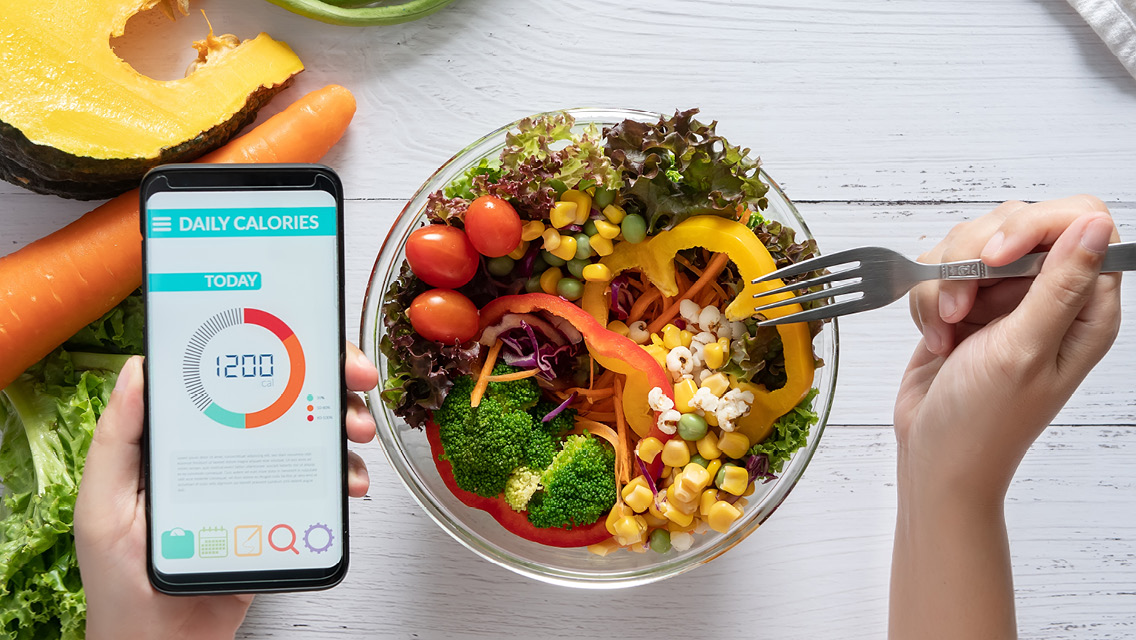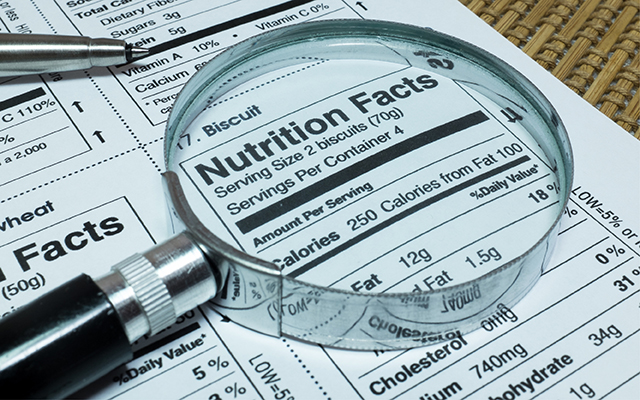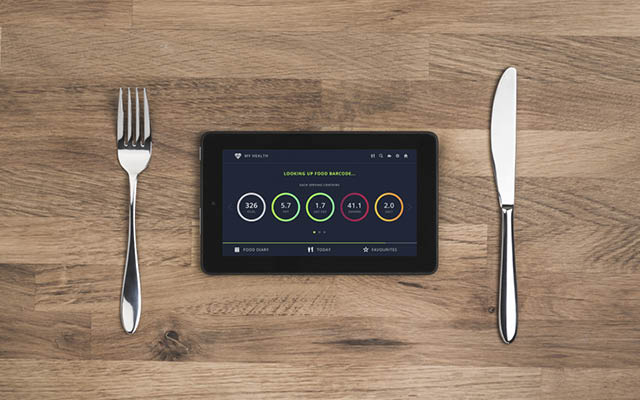When Jonathan Bailor was working as a personal trainer back in his college days, he was frequently confronted by clients who struggled to lose weight on conventional calorie-based programs — even when they ate very little and exercised for hours a day.
A slim person himself, the Seattle-based Bailor was convinced his clients were simply not following his instructions assiduously enough. “When you’re naturally thin,” Bailor says, “it’s very easy to see a heavy person failing to drop weight and think, ‘Wow, what’s their problem? Maybe they should try harder.’”
But as more distraught clients came forward, Bailor started to question the weight-loss advice he and other weight-loss practitioners had been peddling.
“I’d have clients with tears in their eyes saying, ‘Jonathan, I swear to God I’m eating less than 1,200 calories a day. I don’t eat breakfast, and I barely ever eat lunch.’”
Bailor himself had been consuming upward of 6,000 calories daily in an effort to bulk up — but it wasn’t happening.
“I was faced with the cold, hard fact that I was not having any more success managing my body weight than these people were,” says Bailor. “I was eating way more than them and exercising way less. I wasn’t getting any bigger, and they weren’t getting any smaller.”
Bailor realized he couldn’t keep disserving his clients with a failing formula. “I was like a physician who was consistently making his patients worse,” he says. So he quit personal training and started delving deep into the science of weight loss.
What Bailor concluded is that the weight-loss model millions have been following since the 1950s — zealously counting calories in and calories out — is bunk.
Depriving our bodies of calories, it turns out, only tends to slow down our metabolism. Over time, it causes us to gain more unwanted weight.
Depriving our bodies of calories, it turns out, only tends to slow down our metabolism. Over time, it causes us to gain more unwanted weight. (A landmark study from 1944 demonstrated just this. Learn more about The Minnesota Starvation Experiment at “Why Diets Don’t Work — and Never Have“.)
In his New York Times bestseller, The Calorie Myth: How to Eat More, Exercise Less, Lose Weight, and Live Better, Bailor argues that we need to forget the tired maxim of eating less and exercising more.
Instead, we need to eat more of the right kinds of foods and exercise less (but more intelligently and intensely) to balance our hormones, burn fat, and boost metabolism.
An engineer by training, Bailor spent 10 years researching his book and analyzed more than 1,200 peer-reviewed scientific studies to come up with his weight-loss program.
Below, we’ve assembled an interview with Bailor, plus excerpts adapted from his book. For more on Bailor’s work, see www.SANEsolution.com.
— The Editors
Q & A With Jonathan Bailor
Experience Life | You take on many calorie myths in your book, including the long-held idea that weight loss is simply about restricting and burning calories. Specifically, you write that “eating more does not make you fat” and “exercising more does not make you thin.” What do you mean?
Jonathan Bailor | The focus on calories is diabolical because you end up believing that a 100-calorie snack pack of cookies is healthy. It’s not that calories don’t exist or that the “calories in, calories out” equation doesn’t apply. To some extent, it does. It just doesn’t apply in the way we’ve been told.
You can’t successfully manipulate that equation by consciously restricting calories in or increasing calories out. The body is a dynamic system, and if you try to manipulate it with that strategy, it will fight you. And more than 95 percent of the time, you will lose.
EL | You argue that the only way to achieve long-term, sustainable weight loss is to lower your “set point.” Can you explain what the set point is and how it works?
JB | Yes, and it’s important because what I want people to understand is that this isn’t a willpower problem; it’s a systemic problem.
The body works to try to maintain a certain weight. Some people still report this as the theory of the set point, but this isn’t a theory. It’s been proven in every study that’s ever tested it.
If you consume too many calories, does your body burn more calories automatically and unconsciously? Yes. Always.
If you eat fewer calories than you need, does your body automatically burn fewer calories? Yes. That happens every time, in every person, always.
This is just how your body works. Biological organisms automatically try to maintain homeostasis.
People often misunderstand this and say, “The idea that there’s a set point is clearly false because 70 percent of the American population is overweight, and that proves that if you had a set point, then 70 percent of the population wouldn’t be overweight.”
This is why food quality matters so much — because in any system it’s the quality, not the quantity, of the input that changes the system itself.
But the existence of overweight people doesn’t disprove that the system exists. It proves that the system can be overwhelmed and broken down.
This is why food quality matters so much — because in any system it’s the quality, not the quantity, of input that changes the system itself.
For example, you will never clog or damage a sink by putting too much water into it. In contrast, if you put little bits of paper towels or hair into the sink, eventually it will clog and overflow.
In the same way, when we eat low-quality food, we become hormonally and biochemically clogged. Our bodies can no longer respond to signals from our hormones and brains that would otherwise enable us to burn body fat automatically.
That’s why it’s common to see postmenopausal women who are consuming only 1,100 calories a day and still gaining unwanted weight. These women would normally require far more calories just to maintain their weight, but their system has become so dysregulated that it has figured out a way to gain weight on that diet.
When we increase the quality of our eating and exercise, we can heal our hormones, “unclog” our systems, lower our set points, and get our bodies to burn fat instead of storing it.
EL | Eating less of a bad diet, you write, is worse than doing nothing at all to change that diet. Why is that?
JB | Let’s say you take a low-quality diet — one that made you heavy and diabetic — and you simply consume less of it. The reason that it is worse for you than doing nothing is you simply can’t keep that up. You will not tolerate the hunger, the lethargy, the depression, the loss of sex drive, your brain not working, and feeling cold for the rest of your life.
Eventually you’re going to stop consuming less, and when you stop, you will — this is not debatable — you will gain back more fat than you lost, because when you go back to eating your previous quantity of bad food, you are now putting it into a destroyed metabolic system — one with a lowered base metabolic rate.
When you heal your brain, your hormones, and heal your gut, you start spontaneously consuming and absorbing the right number of calories for your system.
So, if you cannot starve yourself forever (and none of us can), you are better off never starving yourself in the first place. That’s why eating less is counterproductive.
So what happens when you instead increase the quality of your eating? Researchers call it a “spontaneous reduction of caloric intake.”
When you heal your brain, your hormones, and heal your gut, you start spontaneously consuming and absorbing the right number of calories for your system. Your system also starts automatically burning more calories. So yes, technically, you’re absorbing fewer calories and burning more, but this is a very, very different scenario than the hypercontrolled “calories-in-calories-out” story we all got sold on.
EL | You talk a lot about eating a SANE diet (see “The ‘SANE’ Way to Eat,” below), which includes lots of protein. Why is protein so important for weight loss and for lowering your set point?
JB | Protein matters because of two things: First, once you correct your set point, you’ll be eating as many calories as you’re burning — except a big portion of the calories you’re burning are going to be from stored body fat. What you don’t want is your body to start burning muscle tissue for fuel — that’s really, really bad for you. Eating more protein helps prevent that.
Second, protein is uniquely satiating. It is unambiguous in the research literature that calorie for calorie, consuming 100 calories of protein will keep you fuller longer than consuming 100 calories of carbohydrate or fat.
EL | How much protein do we need?
JB | What I recommend and what the research shows is that the amount of protein you consume should be based on activity level, age, and fitness goals. I’d say between 75 grams of protein per day on the low end of the spectrum and 200 grams of protein per day on the high end.
An NFL linebacker who weight trains all day, for example, might need 200 grams per day. A 95-pound, 85-year-old woman won’t need anywhere near that much.
EL | Another way to lower your set point, you write, is to “exercise smarter.” Rather than daily aerobic exercise geared toward burning calories, such as jogging, you recommend doing high-intensity, low-impact exercises just one to two times a week for no more than 20 minutes. Why is this?
JB | Rather than focusing on burning calories, the whole goal of smart exercise is to upgrade the calorie-burning system itself — by building metabolism and shifting hormonal balance.
How do we do that? By recruiting more muscle fibers through increased intensity and resistance.
Most aerobic exercise (like jogging) works primarily just one type of muscle fiber (type 1, slow twitch). But research shows that hormonal change happens only when we activate our other three types of fast-twitch muscle fibers (2a, 2x, 2b) as well (see “The Fast and Slow of It” for more on slow- and fast-twitch muscle fibers).
When we engage all four types of muscle fibers, our bodies are forced to produce clog-clearing hormones, such as epinephrine, adrenaline, noradrenaline, and growth hormone, all of which free up energy currently stored as body fat.
The only way to activate all those different types of muscle fibers is to produce a lot of force. And the only way to do that is to exercise with greater intensity (going harder, faster, or working against greater resistance).
Your muscle fibers strive to conserve energetic resources; they’ll exert the least amount of effort necessary to accomplish a given task. If you try to lift something very heavy, your body will progressively recruit available muscle fibers as required, until you’ve engaged all four types.
Common sense dictates that the more muscle fibers you’re activating, the more quickly you’re going to use up energy (and trigger change), and the less exercise you will be able to do before you’re exhausted.
So what I’m arguing is not that we should all exercise less because it’s good to be lazy. I’m arguing that by exercising smarter, we can exert ourselves more effectively in less time, and get much better results.
A Better Way to Exercise
“Take the stairs. Walk 10,000 steps a day. Go for a long bike ride.”
For general health, this is all fine advice. But, if you want to achieve long-term fat loss, you have to exercise in a way that activates your hormones.
The key is increasing exercise resistance — versus duration or frequency. You can do this with targeted resistance training requiring no more than 10 minutes, two times a week.
I recommend a high-intensity-interval-training (HIIT) program that includes “eccentric” muscle contractions. It works your muscles so deeply that you will be sore for two to three days afterward.
If you want to achieve long-term fat loss, you have to exercise in a way that activates your hormones.
Concentric weight-lifting moves (where the muscle contracts) tend to get the most attention, but research shows that lowering weights (the eccentric action where the muscle extends) enables us to generate more force and activate more of our fat-burning muscle fibers.
That’s why all my favorite exercises involve eccentric moves — leg presses, seated rows, chest presses, and overhead shoulder presses.
My own weekly exercise routine consists of doing just one intensive set of eccentric exercises for my legs, back, chest, shoulders, and abdominals. I then do about 15 minutes of yoga-inspired stretching.
I’m all for moving your body however else you like — walking, hiking, dancing, biking. Just don’t rely on those activities to help you burn fat.
Conventional cardio builds aerobic conditioning but doesn’t work well for long-term fat loss because it does not engage the hormone-shifting muscle fibers that help to regulate whole-body metabolism.
Calorie Myths vs. Smarter Science
How do outdated theories of calorie counting stack up against a more science-based philosophy of sustainable weight loss? Here’s a quick overview.
Old Way |
New Way |
|
| “Eat less, exercise more” |
→ |
“Eat more, exercise smarter” |
| Focuses on calorie quantity but ignores calorie quality |
→ |
Improves calorie quality to optimize calorie metabolism |
| Fights your set-point weight |
→ |
Lowers your set-point weight |
| Focuses on short-term weight loss |
→ |
Focuses on long-term fat loss and health |
| Slows down metabolism |
→ |
Speeds up metabolism |
| Overlooks hormones as key factor in weight loss |
→ |
Emphasizes hormones as key factor in weight loss |
While the old-fashioned “eat less, exercise more” approach can work, it doesn’t work for many. Studies show that, 95 percent of the time, counting calories does not keep fat off over the long term. A better approach is to focus on higher-quality calories or eating what I call a “SANE” diet.
A 2006 study of 63 men and women ages 20 to 60 at Skidmore College in Saratoga Springs, N.Y., compared a group of subjects following a traditional calorie-counting “eat less, exercise more” program (we’ll call them the Conventional Group) with a group of subjects who observed a simpler “eat more, exercise less” program (we’ll call them the SANE Group).
The Conventional Group ate a typical Western diet while doing traditional aerobic exercise for 40 minutes daily, six days per week.
The SANE Group ate a higher-protein, lower-carbohydrate diet while exercising only 60 percent as much, but with higher-quality workouts focused on high-intensity cardio and resistance training.
Overall, the Conventional Group ate fewer calories and exercised 18 hours more than the SANE Group. And yet, at the end of the 12-week study, the researchers found that the SANE Group’s results exceeded the Conventional Group’s in all ways:
- The SANE Group had a 21 percent decrease in body fat and 16 percent decrease in belly fat. The Conventional Group had a 10 and 8 percent decrease, respectively.
- The SANE Group posted a 9 percent increase in lean muscle, versus a 4 percent decrease for the Conventional Group.
- The SANE Group showed a 21 percent decrease in LDL (bad) cholesterol compared with a 9 percent decrease for the Conventional Group.
- Given how poorly conventional calorie-focused strategies perform, it’s astonishing how many weight-loss programs continue to recommend them.
The Dreaded Yo-Yo Diet
A great many weight-loss strategies are based on simply eating smaller or calorie-reduced versions of a conventional Western diet. This typically leads to a metabolism-killing yo-yo effect: Our weight initially drops, but then rises again, often higher than it was before.
This dynamic increases our risk of heart attack, stroke, type 2 diabetes, high blood pressure, cancer, immune-system failure, eating disorders, impaired cognitive function, chronic fatigue, and depression.
Worse, the more often we allow our weight to yo-yo, the more susceptible we become to future weight gain.
Putting 2,000 calories of low-quality food into our metabolic system will have a radically different effect on our weight than ingesting the same quantity of high-quality calories.
“It is only the rate of weight regain, not the fact of weight regain, that appears open to debate,” says David Garner, PhD, founder of the River Centre Clinic in Ohio.
In a 1986 University of Pennsylvania study, rats were put on repeated rounds of yo-yo diets. The second time the rats lost weight by eating less, they lost weight 100 percent slower and regained the weight 300 percent faster than the first time they ate less. The study also found that during their second round of yo-yo dieting, rats stored body fat more efficiently than rats who constantly ate a fattening diet.
The conclusion?
Trying to lose weight by reducing food quantity is not a winning strategy. Improving your food quality is a much better way to go.
The “SANE” Way to Eat
You’ve heard that old dieting adage “a calorie is a calorie.” You’ve probably also heard “all foods are fine in moderation.” But the truth is, putting 2,000 calories of low-quality food into our metabolic system will have a radically different effect on our weight than ingesting the same quantity of high-quality calories. And many highly processed foods can set us up for trouble even in moderation.
The quality of calories is determined by four factors:
- Satiety,
- Aggression
- Nutrition
- Efficiency.
A “SANE” approach to eating considers them all.
Satiety refers to how quickly calories satisfy our appetites and hunger. Most of us can easily consume copious amounts of beer and pizza, but if we tried to eat the same amount of calories in another form — say, five cans of tuna or 30 cups of broccoli — we’d be uncomfortably full. That’s satiety in action.
Aggression refers to how likely calories are to be stored as body fat. To keep calories from being shuttled into our fat cells, we don’t need to worry about eating less food. We just need to eat less aggressive food.
Body-fat storage is triggered as a response to eating food that causes us to have more glucose in our bloodstream than we can use at one time.
The more aggressive calories are, the faster they increase the levels of blood glucose and the more likely that our bodies will lock up that glucose as stored fat.
Nutrition refers to how many macro- and micronutrients (vitamins, minerals, essential amino acids, essential fatty acids, phytonutrients) your calories provide.
Fewer nutrients per calorie (as found in most starches, sweets and fast foods) means low nutrition quality.
Lots of nutrients per calorie (as found in nonstarchy vegetables, high-quality proteins, low-sugar fruits, and nuts and seeds) means high nutrition quality.
Efficiency is how easily calories are converted into body fat. The more inefficiently calories are stored as body fat, the better.
Fiber, for example, is not digested and therefore can never be stored as body fat. The body tries to digest fiber, but after burning a bunch of calories trying to break down and absorb fiber, it gives up and passes it through the digestive system.
Refined sugars and starches are quite efficiently converted to body fat, while protein is very inefficiently converted. Fats are easily converted but many have other redeeming “SANE” characteristics that make them desirable (see below).
The more “SANE” foods we eat, the simpler it becomes to achieve and maintain our ideal weight.
The more “inSANE” foods we eat, the more our metabolism is disrupted, and the more inclined we are to overeat.
Foods with a low SANEity rating provide few nutrients and are easily converted into body fat. They trigger the release of body-fat-storing hormones, and they raise our set-point weight.
Here’s a look at my SANEity ratings and serving recommendations for various foods.
Food Group |
SANEity Rating |
How Much to Eat |
| Nonstarchy vegetables |
5 |
As much as you possibly can. Eat 10+ servings daily, ideally some of it raw. |
| Nutrient-dense protein |
5 |
Eat three to six 30- to 55-gram servings daily, for a total of 100 to 200 grams. |
| Whole-food fats |
4.5 |
Eat three to six servings daily, especially seafood, coconut, avocado, macadamia nuts, chia, and flaxseed. |
| Low-sugar fruits |
4.5 |
Eat one to three servings daily of berries and citrus. |
| Legumes |
3 |
As needed. Eat zero to two servings daily. |
| High-sugar dairy |
2.5 |
As little as possible. |
| High-sugar fruits |
2.5 |
As little as possible. |
| Other fats |
2 |
As little as possible. |
| Whole-grain starch |
1 |
As little as possible. |
| Processed starch |
.5 |
None. |
| Sweeteners |
0 |
None. |
Excerpted and adapted from Jonathan Bailor’s book, The Calorie Myth.




This Post Has 0 Comments